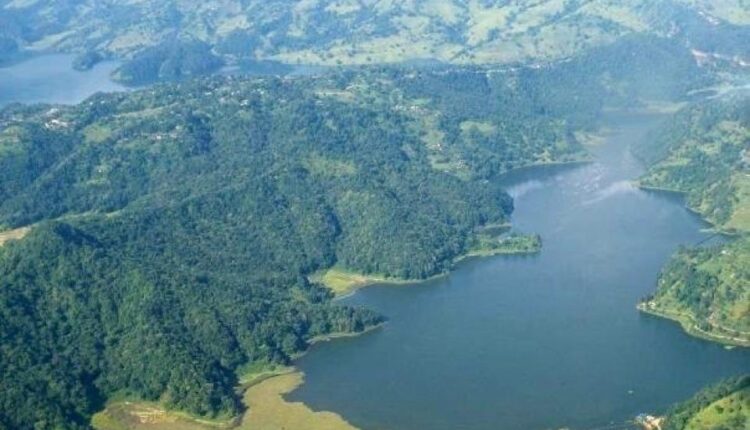Gandaki Pokhara, the tourist capital, is not only a tourist destination for the human community, but it is also a place for birds from home and abroad to visit and roam.
Nine lakes in Pokhara, which is called the city of lakes, have been listed in the Ramsar list. Due to this phenomenon, Pokhara has also become an attractive destination for bird tourism. Manshant Ghimire, president of Pokhara Ponchchi Society, said that nearly 300 species of foreign birds come from China, Siberia and other countries to Pokhara’s Taltalaiya every year.
He informed that different species of birds are seen in Taltalaiya of Pokhara every year during winter and rainy season. “Especially during the winter, predatory birds can be seen in Taltalaiya of Pokhara, and during the rainy season, you can see birds of the koili species”, he said, “Birds from distant foreign countries, including Siberia, come back after spending some time.”
Rupatal is one of the lakes listed in Pokhara’s Ramsar list. It may be surprising to hear, but Rupatal has been feeding foreign birds with fish worth nearly 5 million rupees every year. Shiv Prasad Adhikari, Chairman of Rupatal Restoration and Fisheries Cooperative, said that in this lake, which is touched by some parts of former Lekhnath Municipality-10, 11 and 14, every year, birds of various species, including Jaleva, eat more than 5 million fish.
“Especially during the month of Pus Magh, the diet of about 250 Jalewa who come to Rupatal from places including Siberia for about three months is fish”, he said, “Usually one Jalewa eats half a kilo of fish in a day.”
He informed that Jalewa who live in the forest around the lake at night stay in the lake from sunrise to sunset and eat fish. He informed that with the aim of protecting the lake which was being encroached upon in the past, a cooperative has been established since 2058 and income is being earned by farming fish.
Stating that with the establishment of the cooperative, emphasis has been placed on the protection and use of the lake, he said that 1,030 people have joined the cooperative. According to the cooperative, 24 people have been employed for fishing, janitorial, banking, etc. under the cooperative.
Stating that the cooperative has succeeded in producing fish worth about 20 million annually, he said that the lake produces fish of species such as rahu, naini, common, silver carp, tilapia. According to him, there are about 24-25 local species of fish in the lake. Stating that Rupatal has recently become like an open school for researching aquatic animals, wildlife, and environmental studies, he informed that researchers from around 25 countries come every year.
Ramji Adhikari, an employee of the cooperative, said that there is no problem for the market of fish produced in Rupatal. Stating that the demand for fish in Rupatal is increasing, the officer narrated his experience that it is difficult to supply as per demand.
For the protection and development of the lake, infrastructure development work is being done through Rupatal Conservation Integrated Development Project. With the completion of the targeted work of the project, it is believed that the living standards of the local people will increase through the protection of the lake and tourism development.
Project Information Officer Engineer Krishna Bahadur Vick informed that the cost of the project, which will proceed in stages, is 4 billion 52 crore 88 million. According to him, out of the notification of 995 ropani land for land acquisition under the project, 987 ropani areas have been distributed so far.
Apart from the distribution of compensation, the bridge of Talbensi has been built and the road construction has also been completed. He informed that the construction work of the dam is progressing. After the construction of the dam, the current water level will increase from 620 meters to 624 meters and the area of the lake will increase from the current 122 hectares to 183 hectares, he informed.
With the completion of the project according to the target plan, it is believed that it will make a significant contribution to the protection of the lake and the biological diversity connected with it, the protection of water-dependent animals, etc.
It is seen that the opening of an open zoo by covering the forests surrounding the watershed area of Rupatal will further contribute to the protection and development of this area. The zoo operated as Pachbhaiya Zoological Center is built as a new tourist attraction in accordance with the concept of Greater Pokhara, covering Pachbhaiya, Chainpur and Chapapani Chisakuna Community Forests located in Wards No. 11, 12 and 14 of Savik Lekhnath Municipality. The infrastructure development program has been started covering an area of one hundred and thirty-four hectares.
There are 450 species of animals, 361 species of plants and 175 species of herbs in the zoo premises and Rupatal area. Similarly, in Rupatal there are 24 species of fish and 36 different species of birds, as well as animals like tigers, antelopes, and dragons in the forest area.
Tourists who come to Pokhara can see leopard, nilgai, chital, red deer, chari tiger, python, white vulture, mountain vulture, turtle, etc. in the zoo along with the panoramic view of Rupatal.
There is also a possibility of pearl production in Rupa Lake. Earlier, with long-term efforts, Begnas-based Fisheries Research Center proved the possibility of pearl production in Pokhara’s lake, and the idea of pearl production in Rupatal has also been advanced, said the chairman of the cooperative. Stating that the subject is currently being taken forward as a trial, he informed that once the trial is successful, pearl farming will also be done.


Comments are closed.